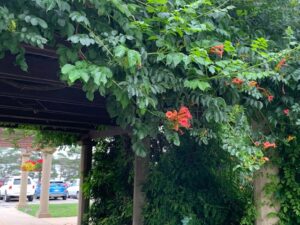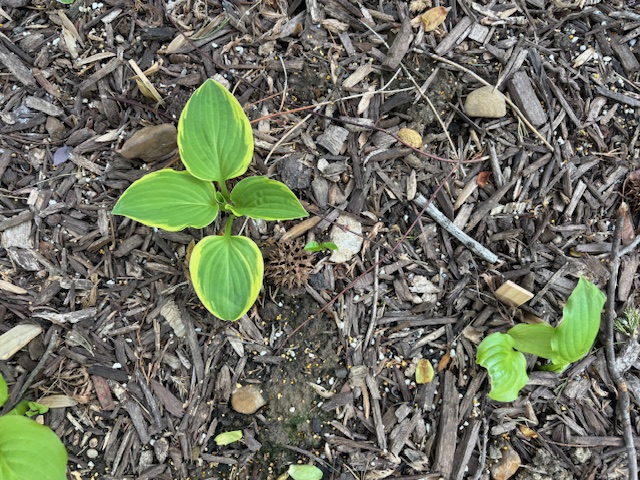Trumpet Vine: Grow With Caution
Views: 2565

One of my earlier blogs, “Virginia Creeper – Good and Not So Good”, dealt with a native vine that does not always behave itself, volunteering where it isn’t wanted and growing rapidly. While it may be good for fall color, and food for the birds, it is sometimes a pain-in-the-neck for gardeners.
Trumpet Vine (Campsis radicans)
Trumpet Vine (campsis radicals) is another native with the same “Jekyll and Hyde” reputation. It’s native to the eastern United States but it’s now spread widely. It loves sunlight and hot weather and is hardy from Zones 4 to 9. It’s now found in the western U.S., Canada, Mexico even in Britain and Western Europe.
What It Looks Like
Its blooms are quite showy, ranging from yellow to red. Here in southern Indiana, it blooms in brilliant crimson-orange. The blossoms are trumpet-shaped and look as if designed by hummingbirds for hummingbirds. After blooming, it forms large seedpods that resemble a green bean or maybe a skinny cigar. The pods hold hundreds of small, papery seeds. They self-seed very readily.
The trumpet vine is a very hardy, deciduous plant. Stems start soft and green, then grow woody and thick with aerial rootlets. As they mature, they grab hold of any available surface. This allows them to climb up nearly anything. Don’t hold still too long if you’re close to one (okay, that’s a joke!). It can climb tall trees cutting off their sunlight, stunting their growth, and if heavy enough can even break branches. You do NOT want the plant too close to your house or other buildings you value.
Some Cautions
Like the Virginia creeper, trumpet vine leaves can cause dermatitis. That explains why it’s also called “cow-itch” and some other less-than-flattering names: “Devil’s Shoestring”, or “hell vine” for instance.
It’s considered mildly toxic to mammals (including your beloved pets). Some of the sites that I’ve researched indicate it’s quite flammable. That’s another very good reason to plant it away from your home and outbuildings.
Cultivars Include
- “Flamenco”, with large red-orange blossoms appearing a bit earlier than regular old trumpet vine.
- “Flava”, a bright yellow, about the same blooming time as “Flamenco”.
- “Indian Summer”, reportedly less invasive, with a slightly paler bloom.
- There are also crosses, such as “Madame Galen” which have been created by crossing Campsis radicans with Campsis grandiflora, the Chinese trumpet vine.
My advice is, please don’t dismiss it completely because hummingbirds and several other pollinators visit it. This can be a great plant for a sunny spot far away from your home or in a more neatly tended garden. It needs very little care. Just prune it back to control its growth and cut off the seed pods before they split open. The open pods are very interesting when used in flower arrangements.
As always, stay green, Good Friends.
Meet Dona Bergman
Dona Bergman is a founding member, Southwest Indiana Chapter of the Indiana Native Plant & Wildlife Society, and an Advanced Master Gardener.







